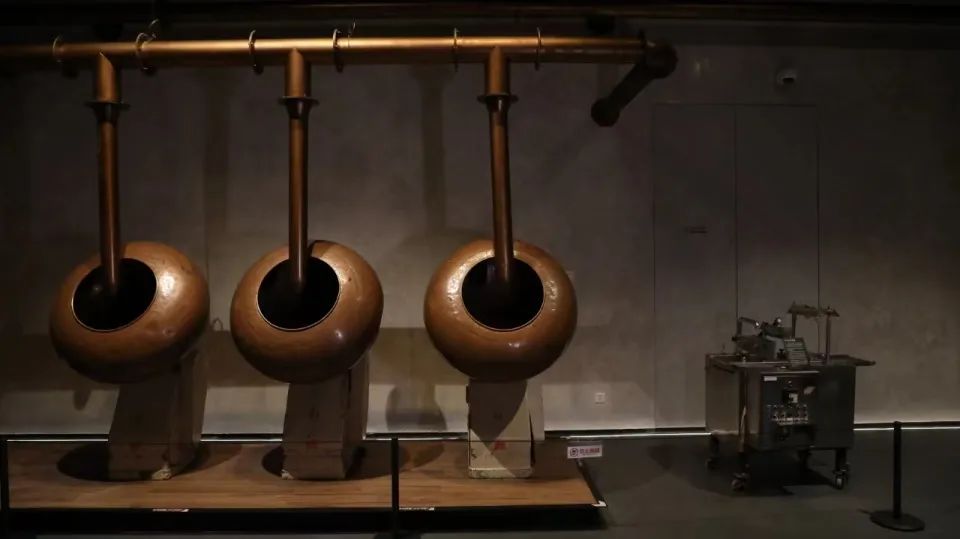Charlie and the Chocolate Factory Comes to Life in Baoshan
The cascading chocolate waterfall, the magnificent candy mountain...Classic scenes from the movie Charlie and the Chocolate Factory might have appeared in every child’s dream.
Now, that dream is becoming reality. Located in Dachang Town, Baoshan District, the Shanghai Bainuo Chocolate Museum was once a bustling chocolate factory with roaring machines. It was here that the beloved childhood treat of Shanghai’s youngsters, Mylikes—a chocolate-coated malt ball snack—came to life.


While the “sweet” memories have yet to fade, they needed a vessel to preserve them. As the company pondered over what to do with its “retired” machines, a sudden spark of inspiration struck. Why not transform the space into a chocolate museum? It took over three years to turn this idea into reality. Through meticulous efforts of the design team—collecting historical materials, gathering old machines with sentimental value, and producing interactive virtual reality (VR) videos—this chocolate museum, the first of its kind in Shanghai initiated by a Chinese brand, now encapsulates rich industrial memories.
Interactive long scroll unveiling the history of chocolate
As emerging technologies continue to shape the museum landscape, VR has become a staple for creating interactive experiences. Yet, the challenge remains: how to employ it appropriately? The interactive long scroll showcasing the history of chocolate at the museum may offer some insight.
Spanning an impressive 38 meters, this display resembling a traditional Chinese scroll vividly illustrates the narrative of cocoa’s journey, from its origins and evolution to its introduction into China, through captivating animations. The pivotal moments in cocoa’s history displayed were handpicked by curator Wang Yuyang and the preparatory team after meticulously sifting through countless cocoa-related publications and historical documents.

It is in this process that the interesting tale of the spicy cocoa drink unfolds. Though deemed as a source of energy and a form of currency by the Mayas, cocoa struggled to find its place in the European market because of the spicy taste of the cocoa drink due to the addition of peppers. It was not until 1527, when Spanish explorer Hernán Cortés added sugar and cinnamon to the mix, that the refined cocoa drink began to captivate palates worldwide.
The little-known history of cocoa is visualized as a captivating journey across mountains and rivers. From dawn till dusk, an animated map vividly traces cocoa’s global trajectory, bringing visitors to bygone eras. “The map serves as a powerful tool for illustrating the spread of cocoa culture,” Wang Yuyang explained, underscoring the original intention of creating the scroll. In her view, it is not always good to apply as many technologies as possible to museum exhibitions. Instead, success lies in the skillful integration of technology tailored to the cultural context and distinctive features of the exhibition.
Collecting the “firsts” in Shanghai’s industrial history
Although initiated by a private entity, this chocolate museum serves as a repository of Shanghai’s industrial legacy.
When retired Shanghainese visit the museum, many of them often linger before a chocolate coin making machine. Despite its weathered appearance, the machine seems to transport viewers to a “sweeter” era of the past.

In the 1980s, chocolate was a luxury. Even the most well-off would only put a few pieces in the candy tray to treat their guests during the Spring Festival. Among these delicacies were chocolate coins. The machine exhibited in the museum comes from Shanghai Yimin Food Factory. Back then, the factory imported the first chocolate coin making machines to Shanghai from overseas and independently developed and launched chocolate products under the brand name Lucky, achieving domestic chocolate production.

The museum abounds with “sweet” reminders of the city’s industrial prowess. As children marvel at lantern-shaped metal “polishing pots”, their parents reminisce about their childhoods as they read the explanatory text. These machines played a crucial role in refining coated chocolate treats like Mylikes, a part of childhood memories for generations.

Beyond the chocolate museum, an increasing number of niche cultural venues and museums have emerged in areas rich in industrial heritage in Baoshan, as part of urban renewal efforts. A prime example is the Shanghai Museum of Glass, born out of Shanghai Glass Instrument Factory No. 1.
If connections can be established among these industrial cultural venues and museums, their narratives can transcend their specific niches, offering a more comprehensive and multifaceted history of Shanghai’s industrial development. “I hope that the story of the chocolate museum will be about more than just chocolate,” Wang Yuyang said, envisioning the future of the museum.

宝山汇APP

上海宝山微信

上海宝山微博